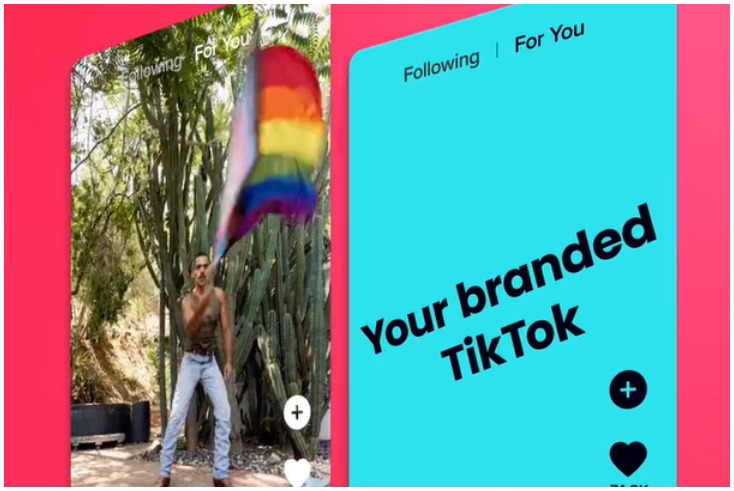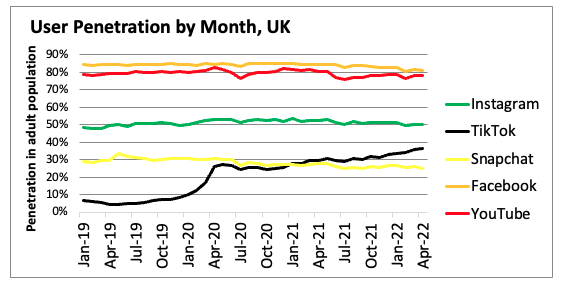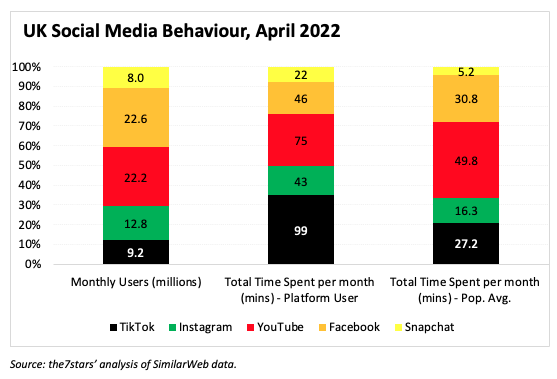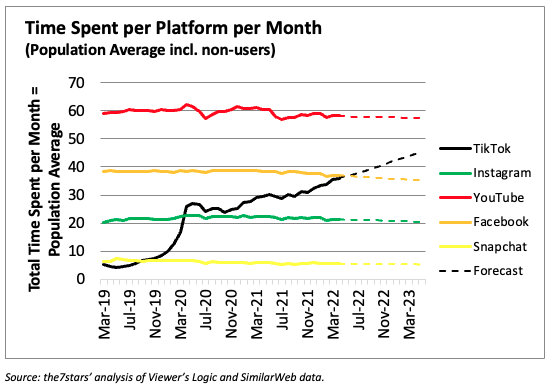How to de-code TikTok (and what to ask TikTok for)

Opinion
TikTok’s growth numbers demand advertisers’ attention – the effectiveness opportunity is too great.
TikTok’s penetration growth and stellar user engagement show no signs of abating. The platform has already passed Facebook and Instagram for total time spent and YouTube is within its sights.
However, TikTok’s advertiser proposition is still nascent. Its ad tech must be proven to be effective through independent measurement; advertisers should mature beyond ‘native’ style content to drive scale, and brand safety guardrails must be strong enough to cater to a new tier of advertisers.
As many lockdown trends reverse – TikTok roars on
TikTok’s penetration growth, user engagement levels and high attention, ad friendly environment mean that it has been the unquestionable media winner of the pandemic. User penetration accelerated hard during the initial lockdown and has followed a consistent growth trajectory ever since.
Even as penetration of subscription video on demand (SVOD) platforms such as Netflix begin to fall for the first time – TikTok’s numbers show no sign of softening. According to ViewersLogic’s data (below), TikTok recorded a high of 36% penetration among UK adults in April.

Of course, it is engagement where TikTok begins to tower over its peer group. According to SimilarWeb data, users active on TikTok in April spent 33% more time with the platform than YouTube users did, and roughly twice as much as each of the Meta platforms Facebook and Instagram.

While TikTok is still playing catchup on penetration – its pace of growth is both relentless and lockdown independent. The platform has already blown passed Twitter, Snapchat and Instagram for time spent, with the distance to Facebook in April equivalent to a rounding error.

If current trends hold, TikTok will begin to challenge YouTube’s supremacy by the end of 2023. Its engagement levels will mean that marketers must start to pay attention. The effectiveness opportunity is too great.
A ray of sunshine amid storm clouds
In a media year characterised by cost inflation, new retail media auctions and declining commercial TV minutes, the opportunity presented by TikTok couldn’t be more timely. As so many media effectiveness storms begin to gather, TikTok has the potential to create significant new effectiveness opportunities in 2022 and beyond.
Key to this is the platform’s seemingly additive nature. It is tempting to pit TikTok against the Meta platforms, YouTube and Snapchat and assume all gains are at the expense of the other. However, the last two years of data shows that this has not been a zero-sum game.
Time spent with Facebook has continued its long-run trend and Instagram remains robust on both penetration and time spent. As the economy reopens and consumers incomes are pressurised, it may follow that TikTok’s rising share of attention represents a greater threat to SVOD platforms than social media platforms. This has the potential for a net positive for advertisers.
Brands will be rewarded for adopting a culture of structured experimentation
Of course, the effectiveness equation is more complex than time spent. The platform’s frightening pace of user growth has meant it has not had the time and space to develop its advertiser proposition (as was the case for Meta or Google before them) and TikTok is not yet ‘oven ready’ for brands. This doesn’t mean that its proposition is necessarily weaker, just that there is an unmet burden of proof.
As brands with more complex media mixes enter the platform, its ad tech must be proven as effective through the funnel. As its proposition develops and ad-to-content ratios mature, brands are likely to experience a wide range of ROIs across different executions. Seizing the opportunity (and giving the platforms opportunities to learn) requires brands and agencies to adopt a more experimental mindset and lean into structured incrementality measurement to manage this risk.
De-coding TikTok
The scale of the effectiveness opportunity in TikTok is hugely exciting for advertisers. In order to assess and leverage this opportunity, brands need to satisfy the following criteria as priority:
1. Prove incrementality through independent experiments
In today’s fragmented landscape – demonstrating the ability to drive incremental brand and business outcomes over and above the existing mix of channels is the number-one priority.
TikTok have learned from the platforms that have gone before them and geo-targeting capabilities are built into their ad products. Brand and Conversion Lift studies are available in platform, but where possible – brands should look to run independent geo-experiments to understand whether the platform is additive.
2. Measure Relative Return on Investment
The key advantage of independent measurement is that greater control enables better comparison with alternative channels. Anchoring results against existing effectiveness learnings (typically econometrics or previous experiments) is key to mapping a sensible budget allocation to the platform.
3. Understand Scale Opportunity
As the platform grows and ad-to-content ratios evolve, brands should be mindful to test scale as well as efficiency. Again, geo-experiments should be used to test iteratively greater budget levels and identify saturation points.
4. “Make ads and make TikToks”
Brands should tailor content strategy to brand attributes and business objectives, not platform guidelines.
Where a brand’s category and/or attributes have strong relevance to the platform and its content, there is a great opportunity to leverage ‘native’ style content to grab attention. But where these overlaps don’t exist, brands should exploit the high attention opportunities in the platform to deliver their brand building assets with appropriate platform tweaks.
In return, brands should demand the following from TikTok:
1. Grow ad-to-content ratio without alienating audiences
TikTok must carefully manage increased advertiser demand with increased supply of ad impressions. Short form content means adverts can more naturally be woven into the user experience but to deliver effectiveness to scale – TikTok must deliver a market leading ad experience for users.
2. Deliver industry leading brand safety guardrails
As more blue-chip advertisers enter the platform, TikTok’s brand safety must survive a higher level of outside scrutiny.
Supporting brands and agencies in targeting business outcomes at the expense of audience reach and engagement will help to avoid poor incentive structures that led to brand safety shortcomings on Google and Meta’s platforms over the last decade.
3. Greater scrutiny encourages better social responsibility
TikTok’s greater regulatory scrutiny (as a consequence of its ownership structure) can create incentives for it to lead the industry on social responsibility. Improving age-gating and content filters, using positive nudges to limit excessive use and focusing engineering talent on content moderation can all contribute to this.
TikTok has roared past established platforms and is moving into a leadership position across video sharing and social media. In a challenging media effectiveness climate, brands will be rewarded for leaning into the platform and authenticating its effectiveness potential through repeated incrementality experiments.
 Billy Ryan is head of analytics at the7stars, the UK’s biggest independent media agency
Billy Ryan is head of analytics at the7stars, the UK’s biggest independent media agency
Strategy Leaders: The Media Leader’s weekly bulletin with thought leadership, news and analysis dedicated to excellence in commercial media strategy.
Sign up for free to ensure you stay up to date every Tuesday.



